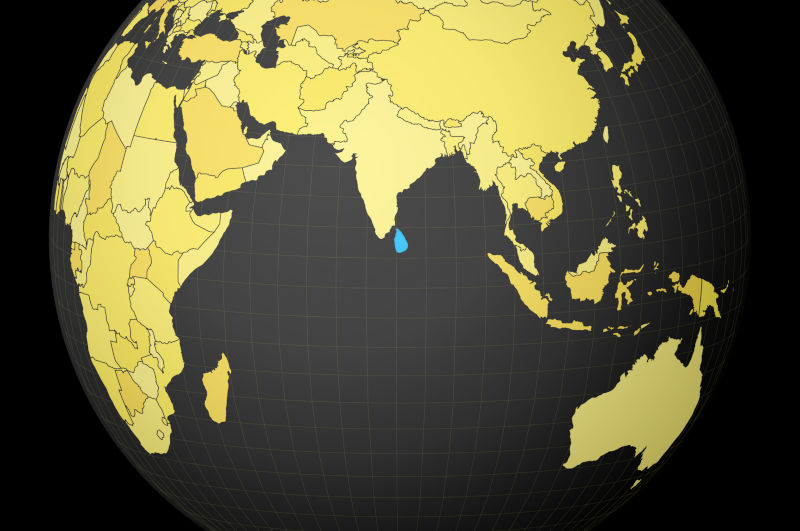There is more to Sri Lanka than boats and the Rajapaksa family
September 11, 2022
In the past 15 years, Australians have become used to thinking of Sri Lanka mainly as an island from where boats filled with asylees - and other venturesome folk - seek illegally to reach our shores.
Both sides of Australian politics understandably seek to prevent this happening -although the Coalition has taken the lead in keeping the issue alive in our political arena. The issuance on our election day of a media release about the interception of a Sri Lankan asylee boat had - to put it mildly - more than the faint whiff of domestic politics.
Moreover, aware of the toxicity of the boats issue in Australia, the new Labor government did not take long to hammer home that it doesnt like boats either. The Home Affairs Minister, Clare ONeil, visited Sri Lanka some four weeks after our election and two weeks before Sri Lankas economic and political crisis boiled over into a popular invasion of the presidential palace and the resignation of the president, Gotabaya Rajapaksa.
The timing of Ms O Neils visit, premised on the 75th anniversary of diplomatic relations between Australia and Sri Lanka, had an urgency and sense of purpose not normally apparent with a mere celebration. The most publicised aspect of the visit was the opening of a fisheries monitoring centre and the associated provision by Australia of GPS tracking devices for some 4200 Sri Lankan fishing vessels- inter alia to improve Sri Lankas border management capacity.
The current economic and political crisis in Sri Lanka should however give our relatively new government pause to reflect on whether our policy towards that country might develop a wider focus -for good Australian national interest reasons.
To begin with, we should recall that since the Civil War which ended bloodily in 2009, Sri Lanka has never fully got back on its feet. The economy initially grew and was in fact buoyant from about 2015 to 2018. However, overspending, debt accumulation, corruption and the lack of a sustained attempt to diminish communal tensions brought the country to its knees. And then there was Covid.
Sri Lanka reached its lowest points with the Easter Bombings in 2019, the default on foreign debt in April this year and the invasion of the presidential palace this July. The country is now flat broke.
All this matters because Sri Lanka is not just an Indian Ocean island which sends out boats. Its stability has implications beyond its shores - as a place where the four main Indo-Pacific players jostle for authority.
India watches Sri Lanka carefully because It is ultra-conscious of Chinas economic presence in Sri Lanka. It is particularly aware of the Chinas 99-year lease on the Southern port of Hambantota. It is mindful also of the implications of Sri Lankas ethnic differences for its own polity, primarily in the southern state of Tamil Nadu.
As the worlds major sea power, Americas interest in Sri Lanka is self-evident given the latters location on the Indo Pacifics main west-east maritime route.
China enjoys the clout associated with being Sri Lankas biggest creditor, but also suffers the irritation of not being paid. Its relationship with Sri Lanka enhances its Indian Ocean presence and keeps the Indians off balance. The relationship is also relevant to Chinas strategic contest with the Americans in the Indo Pacific.
Japans substantial economic dealings with Sri Lanka are in part premised on the need to balance China.
In trying to bring stability to Sri Lanka, the first issue is to achieve an economic package which allows the economy -over $US 50 billion in debt -to rebalance. This will require a debt restructuring in which creditors will have to take a haircut. (A problem here is that China does not like haircuts, preferring deferral of repayment dates or refinancing of loans). Sri Lanka is also looking to the IMF to provide enough credit to get its economy going again.
Japans finance minister, Shunichi Suzuki, has indicated that Japan is prepared to take the lead in bringing creditors together in restructuring negotiations. And following a tough interim budget on 30 August, the IMF at staff level stated on 1 September that it was prepared to provide a bailout of $US2.9 billion as long as Sri Lanka followed a strict financial regimen and creditors could reach agreement. The IMF stressed however that this statement was just the beginning of the process.
The second issue is governance. The North Americans and the Europeans -and Australia in the years immediately after the Civil War - sought to rein in the excesses of the notoriously venal and brutal Rajapaksa family, with only limited success. Even with the Rajapaksas now less visible, there will be ongoing questions in Sri Lanka about management of communal issues and about other abuses such as the use of counter terrorism legislation against protesters.
Australia is not going to be central to an effort to repair the Sri Lankan economy, but we have a director on the IMF Executive Board we are a member of the Paris Club, the group of creditor countries which seeks solutions to payments difficulties faced by debtor countries. We can play a sensible role in stabilisation efforts. A gift of $22 million in food assistance-beyond existing aid commitments -announced in June by the Foreign Minister, Penny Wong, was a good start.
Without leading the pack, we need also to help move Sri Lanka away from the rotten governance which has prevailed over the last couple of decades or so. We have some standing in Sri Lanka with an influential diaspora, a good alumni base and not insignificant business links. We should occasionally say what we think. We did so between 2009-2013 without bringing about a surge of boats. We can do so again
So yes. Stop the boats! But lets add a tad more vision.
